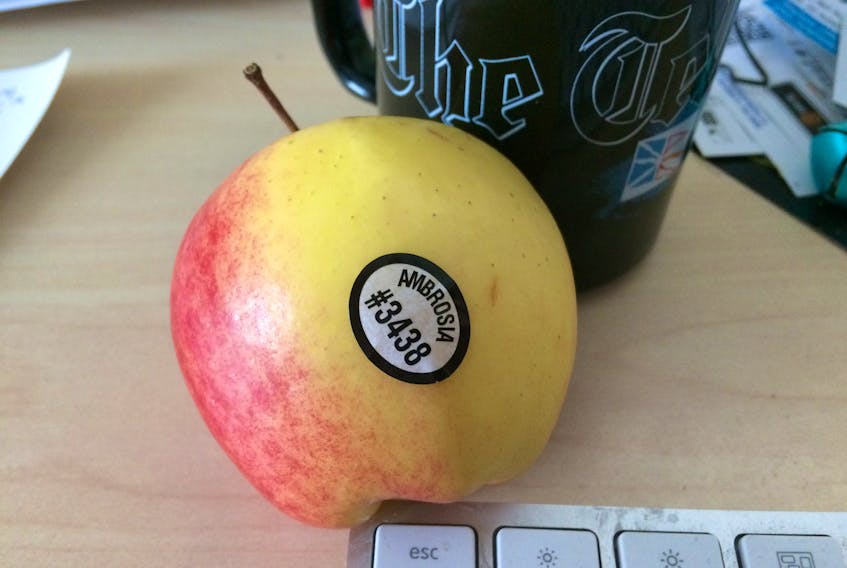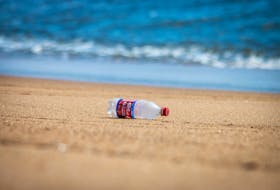Sometimes, you don’t really see things until you start looking.
For more than a decade, I’ve been writing about ocean waste, particularly plastic waste. I’ve always found it striking the way you can follow a river for miles on foot, breaking trail where there’s not even a moose path, and come across a beach strewn with both recognizable plastic items — bleach bottles, pop bottles, shoes and sneakers, margarine tubs — and torn, bedraggled scraps of plastic torn up from being worked over by waves and shore.
I’ve written about microplastics, too, but that’s been more recent, about the way microscopic plastic beads and shards are turning up in far-northern Norwegian mussels, for example, and the way the air transport of tiny plastic scraps means that the materials are falling with snow in areas so remote that humans are hardly ever there.

But plastic isn’t just everywhere in the environment. It’s everywhere around us, and you don’t realize how ubiquitous it is until you actually try to reduce your use of it.
Vitamin D tablets come in plastic bottles; dry chickpeas come in plastic bags. Potato chips and other guilty pleasures come in air-filled thin plastic sleeves.
Both the drug store and the grocery store are stocked to the gills with plastics of all shapes and sizes. Try to buy meat that isn’t shrink-wrapped in plastic film.
I recognize that there are options to reduce things like plastic grocery bags and straws. Plastic bottles, particularly water bottles? There’s no reason to have them in places with modern municipal water systems.
It’s fine to target those things — every bit helps, of course, but the sheer constant presence of plastic is astounding.
Wherever you are right now, you can probably reach out and touch at least five things that are made of plastic. The keyboard keys I’m writing this on are plastic, the phone is plastic, the handles to my scissors are plastic. My pens are plastic, the heads of the push-pins are plastic.
Plastic coats, covers, contains, wraps, shapes, holds and builds more than you’ve ever stopped to consider.
Even the sticker on my lunchtime apple is made of micro-thin plastic. (There are cases where the stickers have been accidentally breathed in and have happily stayed virtually intact inside a lung for two years.)
Plastic coats, covers, contains, wraps, shapes, holds and builds more than you’ve ever stopped to consider. (The thermostat in my office, the vent wings for the HVAC in the ceiling, the clear covers to the ceiling fluorescent lights I never turn on. Picture frames, the arms on chairs, chair wheels, cushion fabrics…)
Once you start looking, it’s downright staggering. And all of it, really, given the nature of our society, is at risk of ending up in a landfill — particularly for plastics parts that are difficult or expensive to remove from combined materials, like, say, that wide-screen television you’ve just replaced with an even-larger one.
I don’t even think we’re to the point where we’re starting to consider whether or not there have to be large-scale alternatives to plastic. Recycling and reuse are good starts, provided that both are even happening — there are more and more stories about how the best intentions and involved efforts to recycle have seen the products collected end up in someone else’s landfill, just one that’s far away.
In the end, the solution’s going to have to be much bigger. If we’re going to keep using plastics the way we do, there’s as much need to sequester the waste it generates as there may be to sequester CO2. And that cost, unquestionably, should be added to any product that continues to add plastic to the waste stream.
If we’re going to continue to use plastic for its convenience, we have to be willing to pay for all its costs.
Russell Wangersky’s column appears in SaltWire publications across Atlantic Canada. He can be reached at [email protected] — Twitter: @wangersky
MORE FROM RUSSELL WANGERSKY
• Conservatives need to rebuild from the ground up
• When the PM’s beard makes the news









